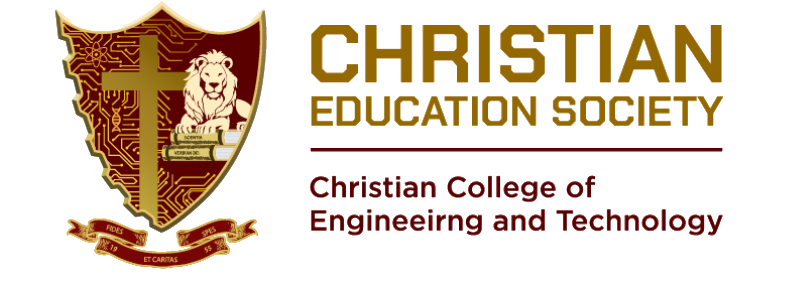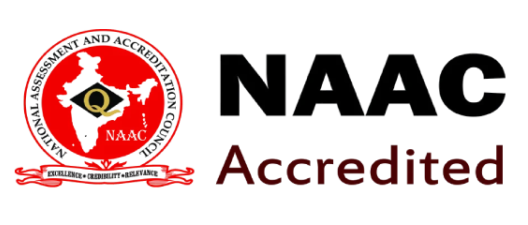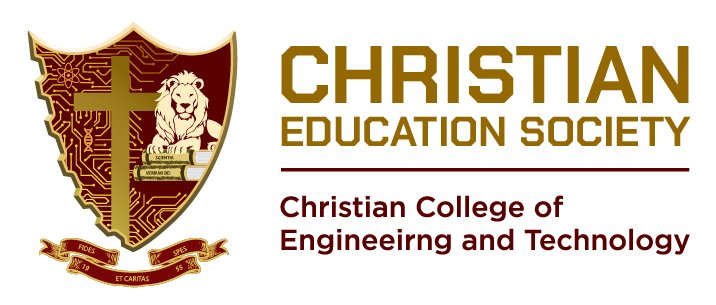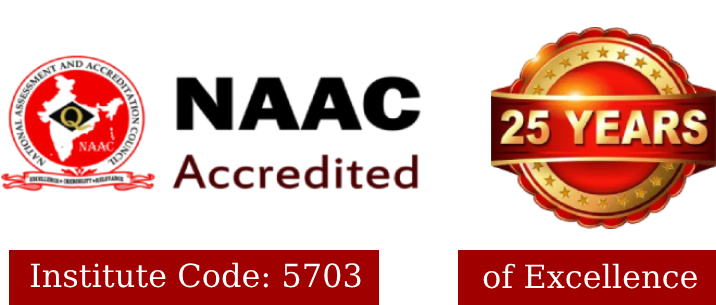Christian College of Engineering and Technology



of Excellence

Christian College Of Engineering and Technology
(Approved By AICTE, New Delhi | Affiliated To Anna University, Chennai )
Near Checkpost, Dindigul Road, Oddanchatram – 624 619, Dindigul (Dist), Tamilnadu



M.E Applied Electronics
Introduction
The Post graduate programme M.E. Applied Electronics was started in the academic year 2011-2012 with an intake of 18 Students. The Department was started with the objective of imparting high-quality education in the field of Electronics. It has the spectrum of highly motivated team who dedicate themselves in imparting technical education to the students. The incessantly maintained student-teacher relationship helps in bringing out the latent talent of the students and updates them to evolve as complete professionals. The Department is well equipped with an eminent faculty team who are in constant pursuit of learning recent developments in the field.
Vision
To be of greater service in meeting the National and International rapid advancements, demands and challenges in the arena of Electronics and Communication by providing pioneering engineers of high repute who abide to high and moral ethics and values.
Mission
To train and mould engineering students to face the ever-growing and complex global changes in the Engineering & Communication field, Industry and Organization and subsequently become committed professionals.
PROGRAMME EDUCATIONAL OBJECTIVES (PEOs):
• To enable graduates to develop solutions to real world problems in the frontier areas of Applied Electronics.
• To enable the graduates to adapt to the latest trends in technology through self-learning and to pursue research to meet out the demands in industries and Academia.
• To enable the graduates to exhibit leadership skills and enhance their abilities through lifelong Learning.
• To become entrepreneurs to develop indigenous solutions.
PROGRAM COURSE OUTCOMES (PCOs):
1. An ability to independently carry out research/investigation and development work to solve practical problems.
2. An ability to write and present a substantial technical report/document.
3. Students should be able to demonstrate a degree of mastery over the area as per the specialization of the program. The mastery should be at a level higher than the requirements in the appropriate bachelor program.
4. To critically evaluate the design and provide optimal solutions to problem areas in advanced signal processing, Consumer and automotive systems, embedded systems and VLSI design.
5. To enhance and develop electronic systems, protocols between circuits using modern engineering hardware and software tools.
6. To acquire knowledge of fundamentals of power electronics, power management, wireless, power supply circuits, RF circuits and FPGA circuits.
The Department of ECE (Applied Electronics) was established in the year 2011 with the intake of just 18 students. It has now become one of the most dynamic departments of Christian College of Engineering and Technology. I am really on proud one to mention that the department has grown tremendously. The growth in increased number of employees and students depicts the standard and quality of teaching over the period of time. It is due to the strength of experienced and well qualified faculty members who are very committed to teaching. The faculty members refresh themselves with the emerging technologies and keep exploring their research in the field of electronics. Their research experience helps to cultivate the future of our students. The department outperforms the college with its unique placements and result percentage. The students get placed in reputed MNCs making the department tall and proud. Our students are multitalented in the field of academics as well as co-curricular activities like symposiums, workshops and International conferences. They have also showcased their talents in sports activities. An international knowledge sharing platform is provided to students by organizing international conferences in our college every year. I believe that my team consisting of Applied Electronics students, staff members is an admiration for the emerging colleges. The department has been providing excellent placements that exhibit our academic and extracurricular strengths. I invite you to the (Applied Electronics) ECE Department if you are looking for an undergraduate or postgraduate program. Our department will help the students to graduate with colors and have a successful career.
TOTAL NUMBER OF SEATS ALLOTED: 18
ESTABLISHED ON 2011-2012
| MA4101 – APPLIED MATHEMATICS FOR ELECTRONICS ENGINEERS – [C101] | |
| C101.1 | Apply the concepts of fuzzy sets, fuzzy logic, fuzzy prepositions and fuzzy quantifiers and in relate. |
| C101.2 | Analyze the performance in terms of probabilities and distributions achieved by the determined solutions. |
| C101.3 | Use some of the commonly encountered two dimensional random variables and extend to multivariate analysis. |
| C101.4 | Classify various random processes and solve problems involving stochastic processes. |
| C101.5 | Use queueing models to solve practical problems. |
| AP4151 – ADVANCED DIGITAL SIGNAL PROCESSING – [C102] | |
| C103.1 | Describe the basics of Digital Signal Processing and Discrete Time Transforms. |
| C103.2 | Design and implement FIR/IIR digital filters using various structures |
| C103.3 | Estimate power spectrum using appropriate parametric/non-parametric method. |
| C103.4 | Analyze discrete time system at different sampling frequencies using the concept of Multirate signal processing |
| C103.5 | Design discrete time system for the given application using Multi rate signal processing |
| AP4152 – ADVANCED DIGITAL SYSTEM DESIGN – [C103] | |
| C104.1 | Analyse and design synchronous sequential circuits. |
| C104.2 | Analyse hazards and design asynchronous sequential circuits. |
| C104.3 | Knowledge on the testing procedure for combinational circuit and PLA. |
| C104.4 | Able to design PLD and ROM. |
| C104.5 | Design and use programming tools for implementing digital circuits of industry standards. |
| AP4153 – SEMICONDUCTOR DEVICES AND MODELING – [C104] | |
| C105.1 | Explore the properties of MOS capacitors |
| C105.2 | Analyze the various characteristics of MOSFET devices. |
| C105.3 | Describe the various CMOS design parameters and their impact on performance of the device |
| C105.4 | Discuss the device level characteristics of BJT transistors. |
| C105.5 | Identify the suitable mathematical technique for simulation. |
| VL4152 – DIGITAL CMOS VLSI DESIGN – [C105] | |
| C106.1 | Use mathematical methods and circuit analysis models in analysis of CMOS digital circuits |
| C106.2 | Create models of moderately sized static CMOS combinational circuits that realize specified digital functions and to optimize combinational circuit delay using RC delay models and logical effort |
| C106.3 | Design sequential logic at the transistor level and compare the tradeoffs of sequencing elements including flip-flops, transparent latches |
| C106.4 | Understand design methodology of arithmetic building blocks |
| C106.5 | Design functional units including ROM and SRAM |
| AP4111 –ELECTRONICS SYSTEM DESIGN LABORATORY – [C106] | |
| C107.1 | Design an instrumentation amplifier and voltage regulator |
| C107.2 | Design a PCB layout using CAD tool |
| C107.3 | Write a Verilog code for various combinational and sequential circuits |
| C107.4 | Develop a memory module with FPGA |
| C107.5 | Design an PLL circuit |
| AP4112 – SIGNAL PROCESSING LABORATORY – [C107] | |
| C108.1 | Obtain the ability to apply knowledge of linear algebra, random process and multirate signal processing in various signal processing applications. |
| C108.2 | Develop the student’s ability on conducting engineering experiments, analyze experimental observations scientificall |
| C108.3 | Become familiar to fundamental principles of linear algebra |
| C108.4 | Familiarize the basic operations of filter banks through simulations |
| C108.5 | Apply the principles of random process in practical applications |
| AP4201 – ANALOG AND MIXED SIGNAL IC DESIGN – [C108] | |
| C109.1 | Carry out research and development in the area of analog and mixed signal IC design. |
| C109.2 | Well versed with the MOS fundamentals, small signal models and analysis of MOSFET based circuits. |
| C109.3 | Analyse and model data converters architecture |
| C109.4 | Understand and Design different mixed signal circuits for various applications as per the user specifications. |
| C109.5 | Analyze and design mixed signal circuits such as Comparator, ADCs, DACs, PLL. |
| AP4251 – INDUSTRIAL INTERNET OF THINGS – [C109] | |
| C110.1 | Understand the basic concepts and Architectures of Internet of Things. |
| C110.2 | Understand various IoT Layers and their relative importance. |
| C110.3 | Realize the importance of Data Analytics in IoT. |
| C110.4 | Study various IoT platforms and Security |
| C110.5 | Understand the concepts of Design Thinking |
| AP4202 – POWER CONVERSION CIRCUITS FOR ELECTRONICS – [C110] | |
| C111.1 | Describe the characteristics, operation of power switching devices and identify their ratings and applications. |
| C111.2 | Understand the requirements SCR Protection, Describe the Functioning of SCR their Construction and Performance. |
| C111.3 | Analyze and Design the Converter Based on SCR for various Industrial Applications. |
| C111.4 | Demonstrate ability to understand High Frequency, Heating Systems, Timers, Relevant Sensors & Actuator and their Application in Industrial Setting. |
| C111.5 | Demonstrate the ability to understand and apply Data Communication, Telemetry & SCADA System in Industrial Applications. |
| AP4203 – EMBEDDED SYSTEMS – [C111] | |
| C112.1 | Able to design an Embedded system |
| C112.2 | Understand a general and single purpose processor |
| C112.3 | Explain different protocols |
| C112.4 | Discuss state machine and design process models |
| C112.5 | Outline embedded software development tools and RTOS |
| AP4001 – APPLICATIONS SPECIFIC INTEGRATED CIRCUITS – [C112] | |
| C113.1 | To architect ASIC library design |
| C113.2 | To develop programmable ASIC logic cells |
| C113.3 | To design I/O cells and interconnects |
| C113.4 | To understand logic synthesis, placement and routing |
| C113.5 | To identify new developments in SOC and low power design |
| AP4003 – VLSI DESIGN TECHNIQUES – [C113] | |
| C114.1 | Program in Verilog/VHDL for combinational and sequential circuits and implement the program in FPGA |
| C114.2 | Implement FIR and IIR filters in FPGA |
| C114.3 | Implement data path design and interfaces |
| C114.4 | Handle CAD tools to draw/edit, and analyze the CMOS circuits. |
| C114.5 | Program and interface the Arduino Boards using Embedded C |
| AP4211 –VLSI DESIGN LABORATORY – [C114] | |
| C115.1 | Ability to independently carryout research and development work in power converters |
| C115.2 | Ability to demonstrate a degree of mastery over the design and fabrication of switching regulators. |
| C115.3 | Ability to apply conceptual basis required for design and testing of various |
| C115.4 | Ability to interact with industry to take up problem of societal importance as Mini project designed. |
| C115.5 | : Ability to compare different possible solution to the same practical problem. |
| VL4072 – CAD FOR VLSI DESIGN – [C201] | |
| C201.1 | use various VLSI design methodologies |
| C201.2 | understand different data structures and algorithms required for VLSI design. |
| C201.3 | develop algorithms for partitioning and placement. |
| C201.4 | develop algorithms for floorplanning and routing. |
| C201.5 | design algorithms for modelling, simulation and synthesis. |
| AP4008 – ADVANCED MICROPROCESSORS AND MICROCONTROLLERS ARCHITECTURES – [C202] | |
| C202.1 | To understand the fundamentals of microprocessor architecture. |
| C202.2 | To know and appreciate the high performance features in CISC architecture. |
| C202.3 | To know and appreciate the high performance features in RISC architecture. |
| C202.4 | To perceive the basic features in Motorola microcontrollers. |
| C202.5 | To interpret and understand PIC Microcontroller. |
| AP4011 – ADVANCED DIGITAL IMAGE PROCESSING – [C203] | |
| C203.1 | To understand image formation and the role of human visual system plays in perception of gray and color image data. |
| C203.2 | To apply image processing techniques in both the spatial and frequency (Fourier) domains. |
| C203.3 | To design image analysis techniques in the form of image segmentation and to evaluate the methodologies for segmentation. |
| C203.4 | To conduct independent study and analysis of feature extraction techniques. |
| C203.5 | To understand the concepts of image registration and image fusion. |
| C203.6 | To analyze the constraints in image processing when dealing with 3D data sets and to apply image processing algorithms in practical applications. |
| ET4251 -IoT FOR SMART SYSTEMS – [C204] | |
| C204.1 | Analyze the concepts of IoT and its present developments. |
| C204.2 | Compare and contrast different platforms and infrastructures available for IoT |
| C204.3 | Explain different protocols and communication technologies used in IoT |
| C204.4 | Analyze the big data analytic and programming of IoT |
| C204.5 | Implement IoT solutions for smart applications |
| AP 4311 – PROJECT WORK I – [C205] | |
| C205.1 | At the end of the course the students will have a clear idea of their area of work and they will be in a position to carry out the remaining phase II work in a systematic way |
| AP 4411 – PROJECT WORK I – [C206] | |
| C206.1 | On Completion of the project work students will be in a position to take up any challenging practical problems and find solution by formulating proper methodology |


